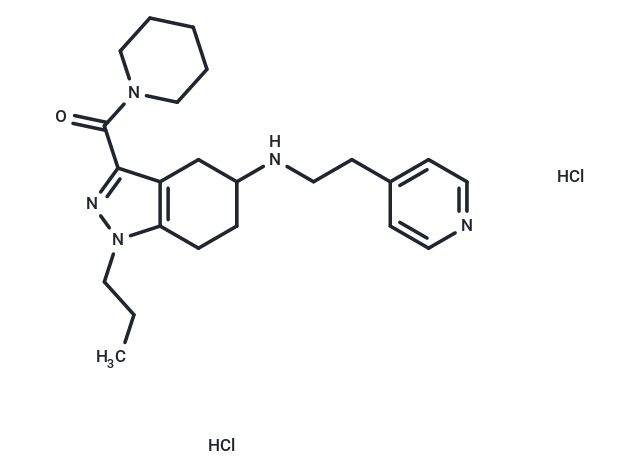Shopping Cart
- Remove All
 Your shopping cart is currently empty
Your shopping cart is currently empty
NUCC-390 dihydrochloride is selective agonist of small-molecule CXCR4 receptor.

| Pack Size | Price | Availability | Quantity |
|---|---|---|---|
| 25 mg | $1,520 | 8-10 weeks | |
| 50 mg | $1,980 | 8-10 weeks | |
| 100 mg | $2,500 | 8-10 weeks |
| Description | NUCC-390 dihydrochloride is selective agonist of small-molecule CXCR4 receptor. |
| In vitro | NUCC-390 dihydrochloride (10 μM;?pre-treatment 30 mins) leads to increased levels of pERK, it has the capability of stimulating signaling activity downstream of CXCR4 receptors[1].NUCC-390 (10 μM;?2 hours) can induce CXCR4 receptor internalization, and non-treated cells exhibit some diffuse expression of CXCR4-YFP throughout the cytosol and clear expression in the cell membrane in HEK cells[1]. |
| In vivo | NUCC-390 dihydrochloride?contributes to the functional and anatomical recovery of the neuromuscular junction (NMJ) following an acute nerve terminal damage by α-LTx in CD-1 mice. |
| Synonyms | NUCC-390 dihydrochloride |
| Molecular Weight | 468.46 |
| Formula | C23H35Cl2N5O |
| Relative Density. | no data available |
| Storage | Powder: -20°C for 3 years | In solvent: -80°C for 1 year | Shipping with blue ice. |

Copyright © 2015-2025 TargetMol Chemicals Inc. All Rights Reserved.